Introduction
Imagine a fresher or a professional wants to apply for a remote job. He made a resume carefully, but when the recruiter read his cover letter, the recruiter thought of only one thing: is this candidate ready for remote work?
That’s the moment that can increase your selection chances or decrease them.
In today’s world, a remote job has become a lifestyle, but competition is also tough. To stand out in this race, a personalised and smart cover letter is a secret weapon for you. It shows your skills as well as shows that you are perfect for remote work challenges and the culture of the company.
You don’t have to worry about making a good cover letter. If you read this article, then you will be able to create the best one for you.
You can read the summary of this article here.
What is a Cover Letter?
A cover letter is a personalized document you send with your resume when applying for a job. The main purpose is to introduce yourself, tell why you are interested in the applied job, and how you are a perfect match for that job. A resume only shows your qualifications and experience, but a cover letter allows you to tell the interviewer about yourself. A resume is the answer to ‘what you have done’, but a cover letter is the answer to ‘why you have done it and its importance’.
Why is it Important?
In today’s time, when thousands of people apply for a single job, a cover letter helps you to stand out from those thousands of people. It adds extra value to your resume that increases your impression on the interviewer. It allows you to tell your story, show your genuine interest in the role, and explain why you’re the right fit for the company.
- Creates a strong first impression
From the cover letter, the interviewer gets an idea about your personality and your communication skills.
- Shows genuine interest
If your cover letter is good, then it means you have done very well research about the company, and you have all the information that an employee should have, which increases your hiring chances.
- Explains career gaps or shifts
As we know, a resume does not cover all the things in detail; it only shows what we have done, our experience, and qualifications. However, cover letters allow us to express ourselves in front of an interviewer. Whatever we want to tell about ourselves, we can openly share in our letter.
- Adds context to your resume
Whatever skills we have written in a resume, the cover letter explains all those skills in detail, and how we can benefit their company.
- Builds a connection with the hiring manager
It adds a human touch and helps establish rapport.
If your resume is the menu, your cover letter is the personal invitation that makes the hiring manager say, “I want to meet this person.”
Tips to Make Cover Letter for Remote Jobs
1. Highlight Remote Readiness
Remote jobs are different from traditional office roles because employers are not able to monitor employees directly in a remote job. That’s why you have to show clearly in your cover letter that you are remote-ready. Highlight your communication skills like how you update your team and how you maintain clarity in virtual settings. Showing time management skills is also very important; you have to show how you meet deadlines without any constant reminders. Also, give an example of self-discipline, such as how you work efficiently by avoiding distractions. All these qualities show recruiters that you can be successful in a remote role.
2. Showcase Tech Skills and Tools
Technology is the backbone of remote work. A recruiter should know that you have experience with remote tools. Mention that you have worked with tools such as zoom, Slack, asana, Google Workspace, or Microsoft Teams in your cover letter. Add if you have led any meeting or project through these tools. It shows that you are not only tech-savvy but you can also adapt to new software quickly.
3. Tailor for Each Job
The biggest mistake that most job seekers make is they send a generic cover letter. Every company expects a personalized application. You should research about the company, such as its culture, mission, and values, and then reflect that in your cover letter. For example, if the company values innovation, then mention in your cover letter how you provided creative solutions in your past project. When your tone and examples align with the company’s goal, then your application becomes stronger.
4. Focus on the Result not Just the Tasks
Recruiters don’t see your daily tasks; they only want results. That’s why showcase your achievement with numbers in your cover letter. For example, “I have improved engagement by 40% within 2 months by optimizing content strategy”. Quantifiable results increase your credibility and show that you can create impact through independent work as well. Use strong action words and tell clearly how you make a difference.
5. Address time Zones and Flexibility
The biggest challenge of remote work is the time zone. You need to prove that you are flexible. Write in your cover letter that you have experience in coordinating with teams in different time zones. It shows adaptability that you are reliable and can be a valuable member of a global team.
6. Keep it Concise and Clear
The creators have thousands of applications, which is why your cover letter should be simple and to the point. Avoid long paragraphs, use short sentences, and bullet points. It shows that you can present your view in a clear and structured manner. Remember that it is not a detailed resume, it is just an introduction.
7. Show Passion and Cultural Fit
Recruiter also want to see why you want to work for their company, beyond skills and experience. Show your genuine passion. Connect your values with the mission or values of the company. For example, if the company promotes sustainability, then you can mention that you have an interest in eco-friendly initiatives. This is a small personal touch that makes your application authentic.
8. Proofread and Professional Formatting
Written communication is most important in remote roles. Spelling mistakes or grammatical mistakes can give a negative impression. That’s why proofread your cover letter. Use tools like Grammarly for proofreading. Keep formatting professional, such as a clean font, proper spacing, and consistent alignment. A polished and error-free letter showcases your attention to detail, which is very important for a remote job.
Common Mistakes to Avoid While Creating your Cover Letter
Here are some common mistakes to avoid to create an impressive and effective cover letter,
- Using a Generic Cover Letter
Using the same cover letter for every job posting. Customize it to the job description and your research.
- Repeating Your Resume
Writing the same thing in the resume and the cover letter is a mistake. Do not copy resume content in your cover letter.
- Weak Opening Line
If your starting lines aren’t interesting then you will be unable to make a good impression on the interviewer. Start with lines that show the energy or achievement.
- Forgetting to Show Enthusiasm
Writing a letter that sounds robotic or too formal. Show real excitement about the role and the company — let your passion come.
- Too Long or Too Wordy
It should not be too lengthy. If it were too long, then the interviewer would feel bored and the interviewer could reject without reading the full cover letter.
- Grammatical and Spelling Errors
Always proofread before submitting. Check all the grammar and spelling errors, and if there are any mistakes, then correct them.
- Missing a Clear Call-to-Action
Ending abruptly without stating your next step.
Fix: Close confidently — for example: “I’d love the opportunity to discuss how I can contribute to your team.”
Structure of a Cover Letter
A perfect cover letter should be simple, clear, and professional. If you want to make a perfect cover letter, then below is a step-by-step guide in detail. You can make it by following these steps.
- Header (Top Section)
Your name, contact info (email, phone), date, and the employer’s details.
Example – Pooja Sharma
Pooja@example.com | +91-XXXXXXXXXX
5 August 2025
Hiring Manager
XYZ Company
Mumbai, India
- Greeting / Salutation
Address the hiring manager by name if possible. If you don’t know the name, use “Dear Hiring Manager.”
Opening Paragraph
Write a short intro telling for which post you want to apply and why you are interested in this role.
Example: I’m writing to express my interest in the Marketing Assistant position at XYZ Company. With a passion for creative communication and a background in digital marketing, I believe I can contribute meaningfully to your team.
- Body Paragraph(s)
Highlight your skills and experience, and how you are a perfect match for this role.
Example: In my previous role at ABC Agency, I led a social media campaign that increased engagement by 40%. I enjoy blending creativity with analytics to create content that connects with audiences.
- Closing Paragraph
Wrap up confidently. Show appreciation, mention that your resume is attached, and express eagerness for an interview.
Example: Thank you for considering my application. I have attached my resume for your review. I would welcome the opportunity to discuss how my background aligns with your needs.
- Signature
In the end, write a formal closing with your name.
Example: Sincerely,
Pooja Sharma.
Sample of a Cover Letter
Understanding theory is great, but seeing real examples brings clarity. In this section, you’ll find sample cover letters for remote roles. This example will help you understand how to structure your own, highlight your strengths, and confidently present yourself to potential employers.
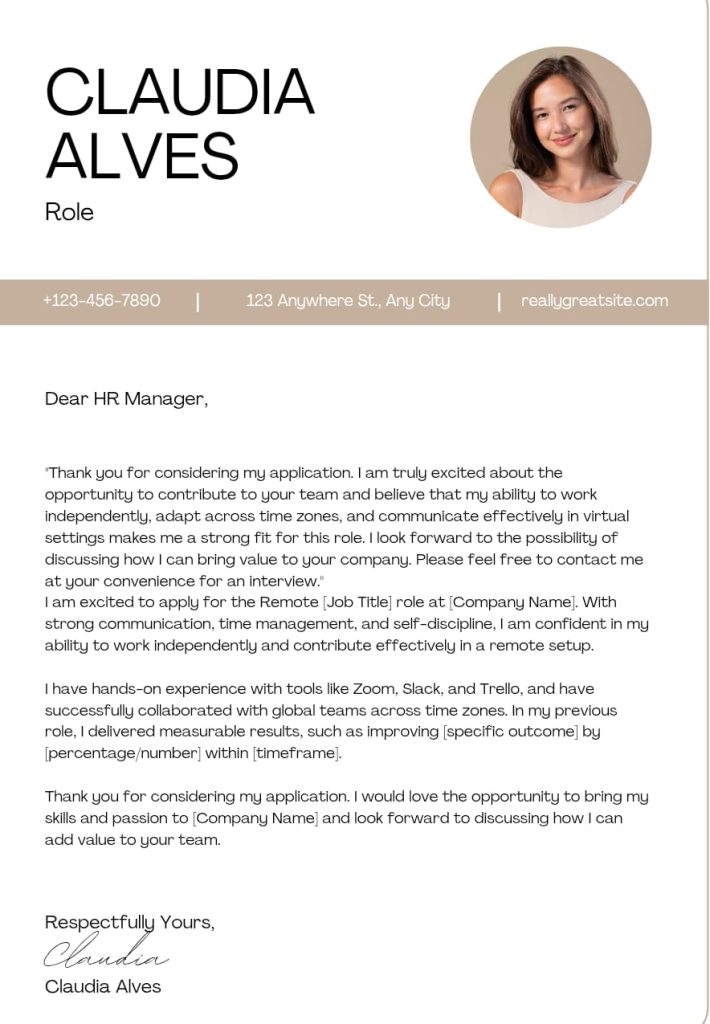
Conclusion
Applying for remote jobs is like a journey. Your resume is the first step, but the cover letter is the bridge that connects you with the recruiter. If your cover letter highlights your remote-readiness, flexibility, and genuine passion, you’re already one step ahead of other applicants.
Think about it— a recruiter’s inbox has 100 applications. Most resumes look similar, but a cover letter that is personalized, clear, and passionate creates the strongest impact.
So, next time you apply for a remote job, don’t treat your cover letter as just a formality—make it your story that convinces the recruiter you’re exactly the candidate they’ve been searching for.
You can also take help from one of blogs of Best Job Tool on “Mastering Art of the Cover Letter: Tips and Examples”.
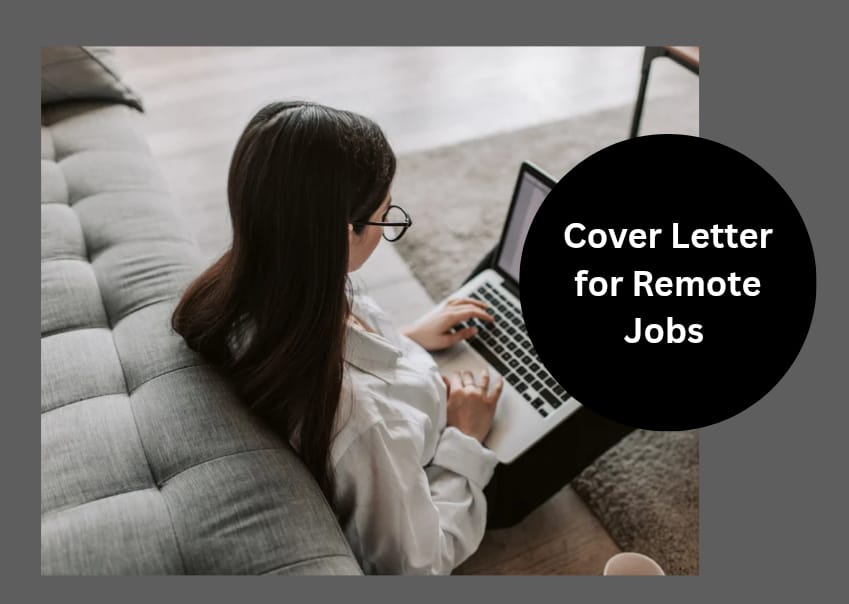
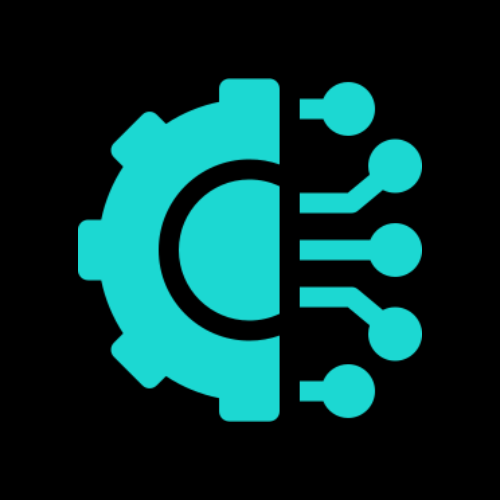



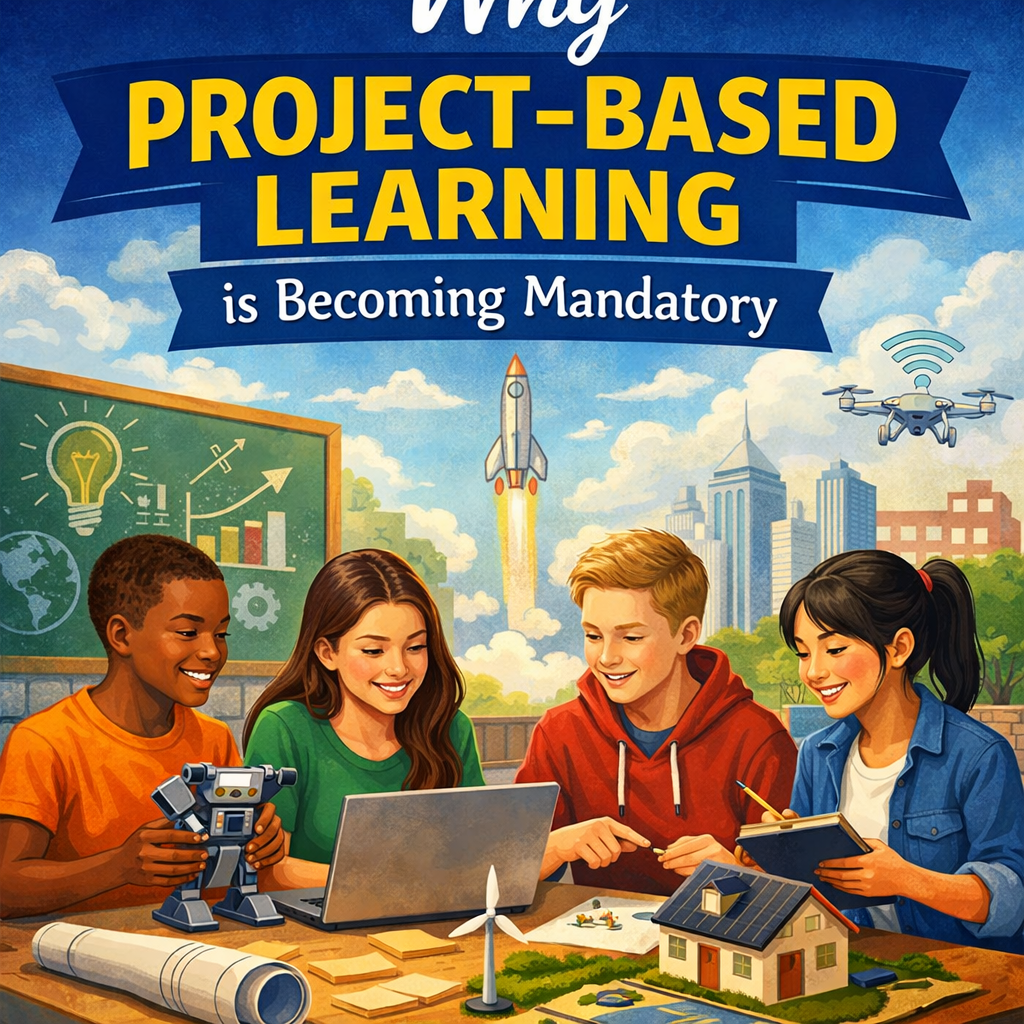
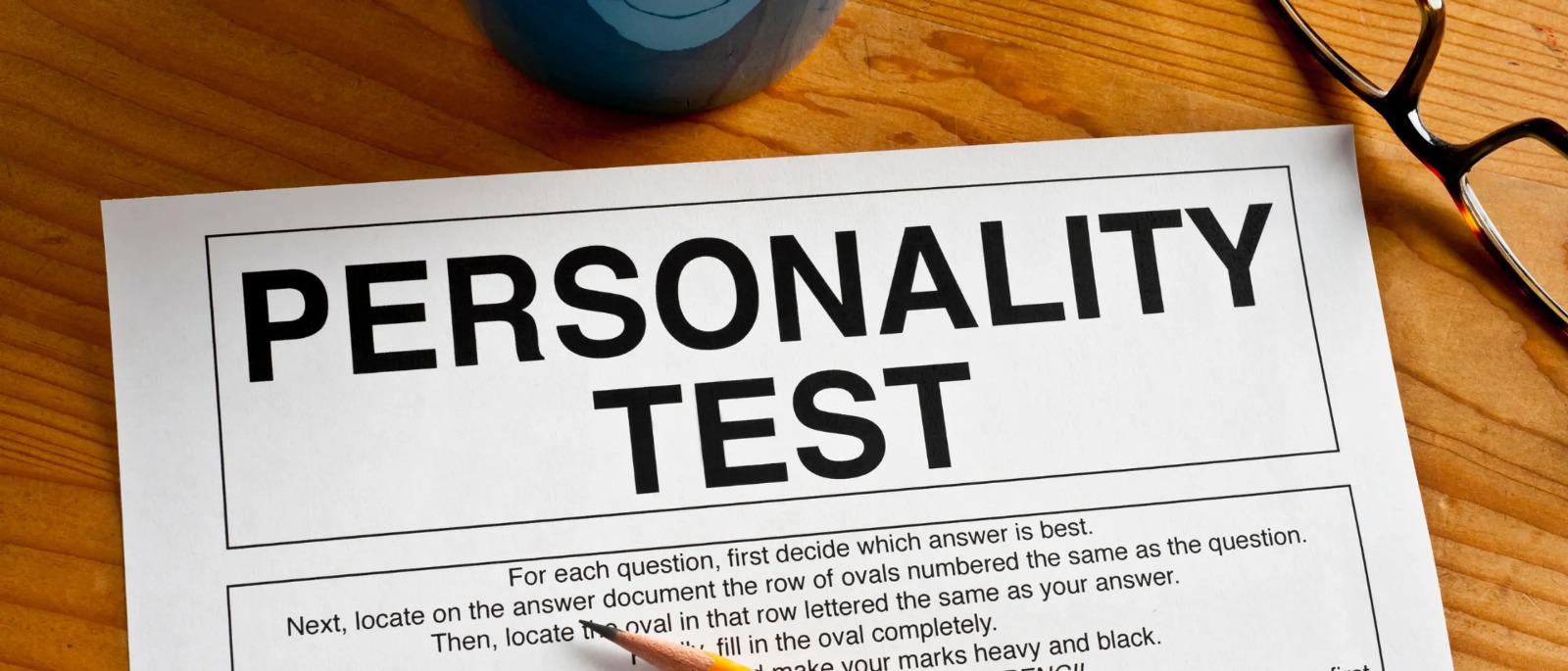
Leave a Reply